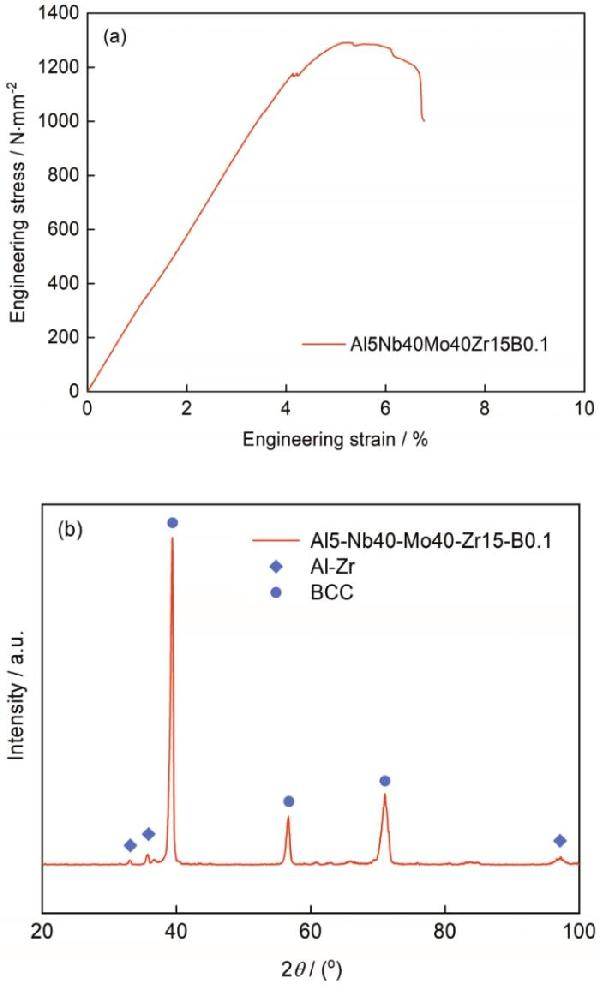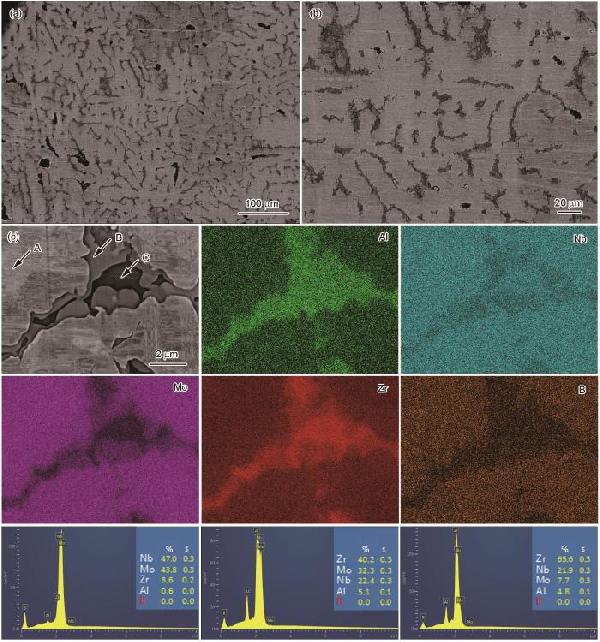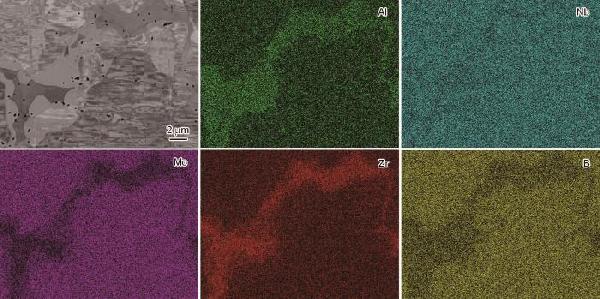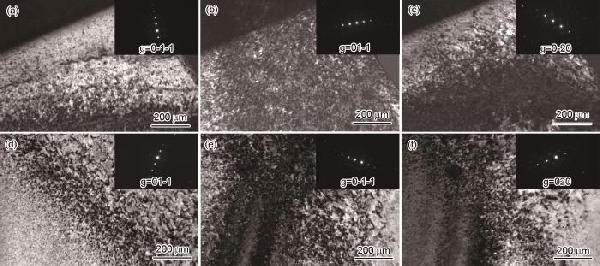
全部
▼
搜索
熱搜:
 1020
編輯:中冶有色技術網(wǎng)
來源:毛建軍,富童,潘虎成,滕常青,張偉,謝東升,吳璐
1020
編輯:中冶有色技術網(wǎng)
來源:毛建軍,富童,潘虎成,滕常青,張偉,謝東升,吳璐

| Alloy |
σc0.2 /MPa |
σp /MPa |
εp /% |
|---|---|---|---|
| Al5Nb40Mo40Zr15B0.1-cast | 1180 | 1274 | 4.8 |

| Points | Al | Nb | Mo | Zr |
|---|---|---|---|---|
|
Nominal composition A (white dendrite rigon) B (gray interdendritic rigon) C (black interdendritic rigon) |
5 2.06 15.65 14.67 |
40 46.89 19.97 19.43 |
40 42.31 27.88 6.62 |
15 8.74 36.50 59.28 |


| Points | Al | Nb | Mo | Zr |
|---|---|---|---|---|
|
a1 a2 a3 a4 a5 a6 |
6.84 9.83 1.97 0.85 1.93 9.17 |
9 21.7 37.67 40.16 39.35 19.21 |
12.76 27.37 45.46 44.07 36.84 27.36 |
71.4 41.09 14.91 14.92 13.15 44.26 |
| Points | Al | Nb | Mo | Zr |
|---|---|---|---|---|
|
d1 d2 d3 d4 d5 d6 d7 |
2.37 1.88 1.91 2.65 6.61 4.48 4.31 |
42.27 42.64 42.84 45.38 23 11.01 20.61 |
41.46 39.18 38.62 34.76 21.36 9.55 5.25 |
13.89 16.3 16.64 17.21 49.04 74.96 69.83 |

 分享 0
分享 0
 舉報 0
舉報 0
 收藏 0
收藏 0
 反對 0
反對 0
 點贊 0
點贊 0

